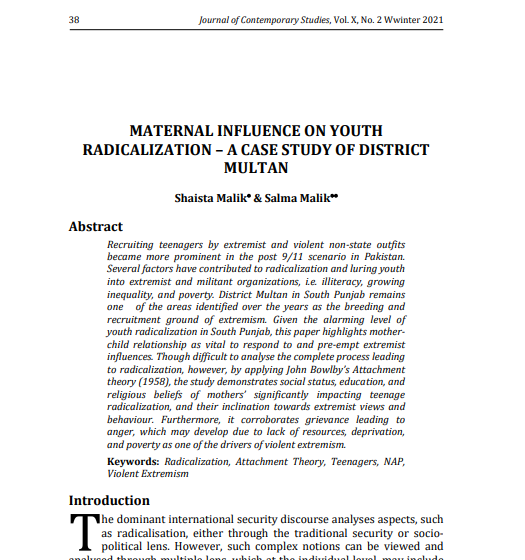MATERNAL INFLUENCE ON YOUTH RADICALIZATION – A CASE STUDY OF DISTRICT MULTAN
Keywords:
Radicalization, Attachment Theory, Teenagers, NAP, Violent ExtremismAbstract
Recruiting teenagers by extremist and violent non-state outfits became more prominent in the post 9/11 scenario in Pakistan.
Several factors have contributed to radicalization and luring youth into extremist and militant organizations, i.e. illiteracy, growing
inequality, and poverty. District Multan in South Punjab remains one of the areas identified over the years as the breeding and
recruitment ground of extremism. Given the alarming level of youth radicalization in South Punjab, this paper highlights motherchild relationship as vital to respond to and pre-empt extremist influences. Though difficult to analyse the complete process leading
to radicalization, however, by applying John Bowlby’s Attachment theory (1958), the study demonstrates social status, education, and
religious beliefs of mothers’ significantly impacting teenage
radicalization, and their inclination towards extremist views and
behaviour. Furthermore, it corroborates grievance leading to
anger, which may develop due to lack of resources, deprivation,
and poverty as one of the drivers of violent extremism.

Downloads
Published
How to Cite
Issue
Section
License
Copyright (c) 2022 National Defence University

This work is licensed under a Creative Commons Attribution-NonCommercial 4.0 International License.
License Terms








